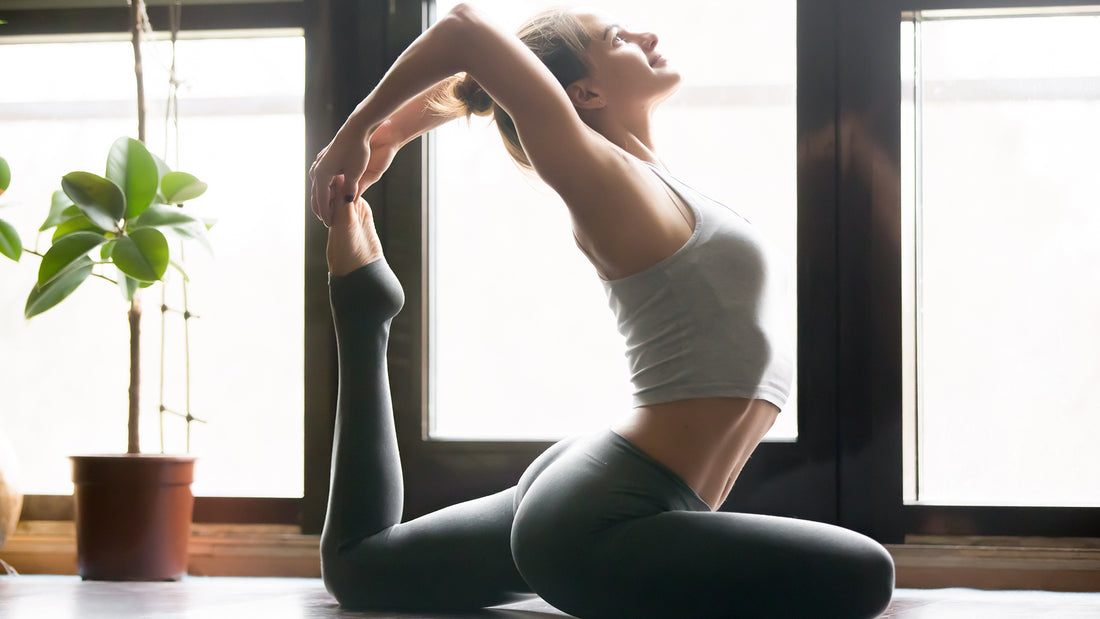Are you looking to improve your flexibility and range of movement? Do you want to feel more comfortable in yoga classes or when executing certain stretches and exercises? The good news is that increasing your overall flexibility does not have to be overly strenuous or time-consuming. With the right techniques, regular stretching exercises, and plenty of practice, you can learn how to become more flexible even if you are just starting out! In this blog post, we’ll explore some easy tips for improving your flexibility as well as discuss prevention strategies for avoiding injury. Whether your goal is simply better mobility or achieving a specific level of performance from an activity like gymnastics or dance, read on to discover how to make it happen!
1. Make Stretching a Regular Part of Your Routine
Regularly stretching your body and muscles can have multiple positive effects on your health, from improved flexibility to better posture. Adding some simple stretches to your daily routine can make a huge difference in how your body feels. Stretching at least three times a week will help prevent the build-up of lactic acid, an acid that can cause stiff and sore muscles. Stretching each major muscle group for around 30 seconds will not only protect you from injury but also improve muscle elasticity for greater range of motion and enhanced energy levels. So what are you waiting for? Make stretching a regular part of your lifestyle now, and experience the benefits firsthand!
2. Take Time to Warm Up Before Exercise
Being flexible is an incredibly useful skill to have, as it can benefit both physical and mental health. One of the most important steps to becoming more flexible is to make sure to always warm up before engaging in any exercise. Taking a few minutes before each physical activity session to do some dynamic stretching will prepare your body by increasing your heart rate, circulation, and making muscles more pliable. Doing so increases the range of motion within joints, reduces injuries, helps protect against muscle pulls and strains and prepares the body for more strenuous exercises which demand flexibility. Taking time to properly warm-up should be a part of anyone's fitness regime if they're looking to increase their level of flexibility.
3. Consider Taking a Yoga Class
Becoming more flexible can benefit us both physically and mentally. One way to achieve increased flexibility is by taking a yoga class, as regular practice will improve muscle tone, posture and even circulation. You don't have to venture into a special yoga studio to reap the rewards of a relaxing yoga session either. Look online and you may discover free or low-cost classes in your community or online. Get ready to stretch your body in new ways with mindful practice that connects our inner core energy grounds with breathing techniques and physical postures from various styles of yoga (Hatha, Ashtanga, Iyengar). Improving your flexibility through a guided practice brings about peace and tranquility that are essential for our overall well-being, regardless of age or experience level!
4. Try Different Types of Stretches
Becoming more flexible doesn't have to be complicated; it can actually be surprisingly straightforward. Stretching is one of the most effective ways for increasing flexibility and should be done with both static stretches (holding a stretch for 15-30 seconds) and dynamic stretches (active movements that increase range of motion). Dynamic stretches are particularly useful for those looking to fit some light exercise into their daily routine, as well as those who experience stiffness from sitting at a desk all day. Specifically, including different types of stretching will help ensure that you are tightening during each stretch while using larger muscles groups. Combining dynamic stretching and static stretching will lead to improved performance in physical activity, increased blood flow, reduced risk of injury, and an overall better state of physical health.
5. Work on Your Balance and Coordination
Becoming more flexible involves more than just stretching – it also means improving your balance and coordination. To work on these, the best advice is to do exercises that challenge your body's coordination. For example, walking on a balance beam with your eyes closed will force you to use your core muscles and maintain better balance even when you can't see. Adding sitting and standing Yoga poses will improve spinal flexibility while strengthening your fitness foundation. The improvements in posture, balance, spatial awareness, and coordination that come as a result of improved flexibility should never be underestimated – they can help make you stronger both physically and mentally!
6. Don’t Overstretch
Stretching is an important component to becoming more flexible, but it is important to do it correctly. If you find yourself overstretching, meaning that your tendons and muscles are stretched too far, you may end up with injury instead of increased flexibility. It is best not to strain your body past its comfort level as this can lead to strains, pain and even tears in the muscle. Instead, focus on controlled stretching while listening to your body and being mindful of any discomfort or declines in your range of motion. With some regular practice, consistency, and patience you can increase your range of motion safely and effectively.
In summary, becoming more flexible comes down to routine and discipline. To increase your flexibility, make stretching a regular part of your daily routine. If you want to focus specifically on improving range of motion, take some time to warm up before engaging in physical activity, and consider trying out a yoga class. Don’t be afraid to try out different types of stretches as your body and muscles will benefit from this variety. Additionally, focusing on exercises that help improve balance and coordination can help improve overall flexibility. Finally, always remember not to overstretch and take care of your body! With patience and dedication anyone can reap the benefits of increased flexibility and enjoy all the positive attributes it brings with it.

